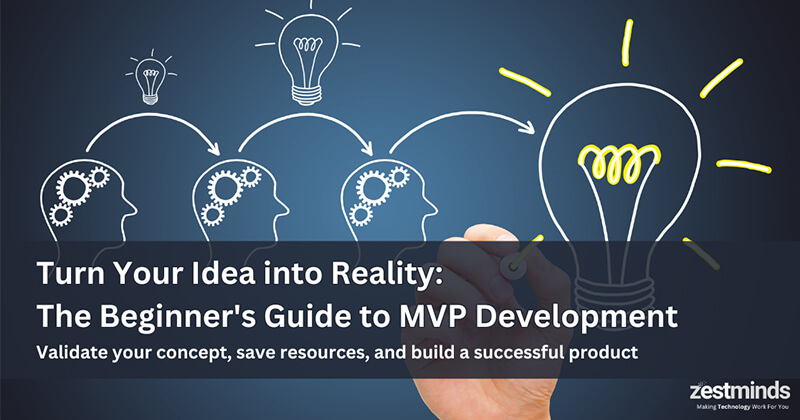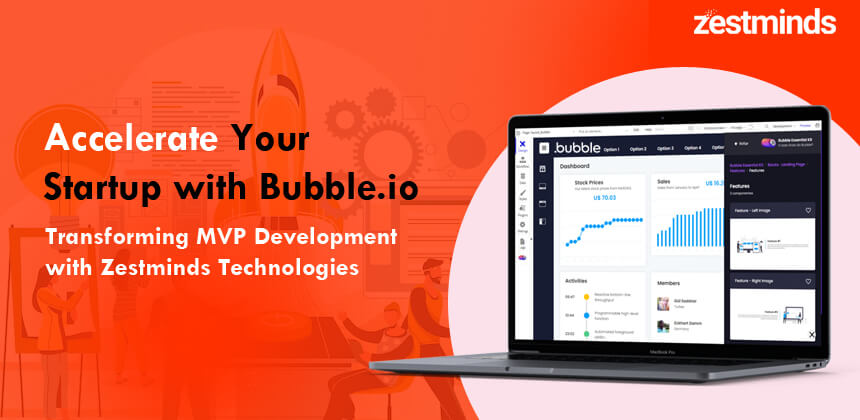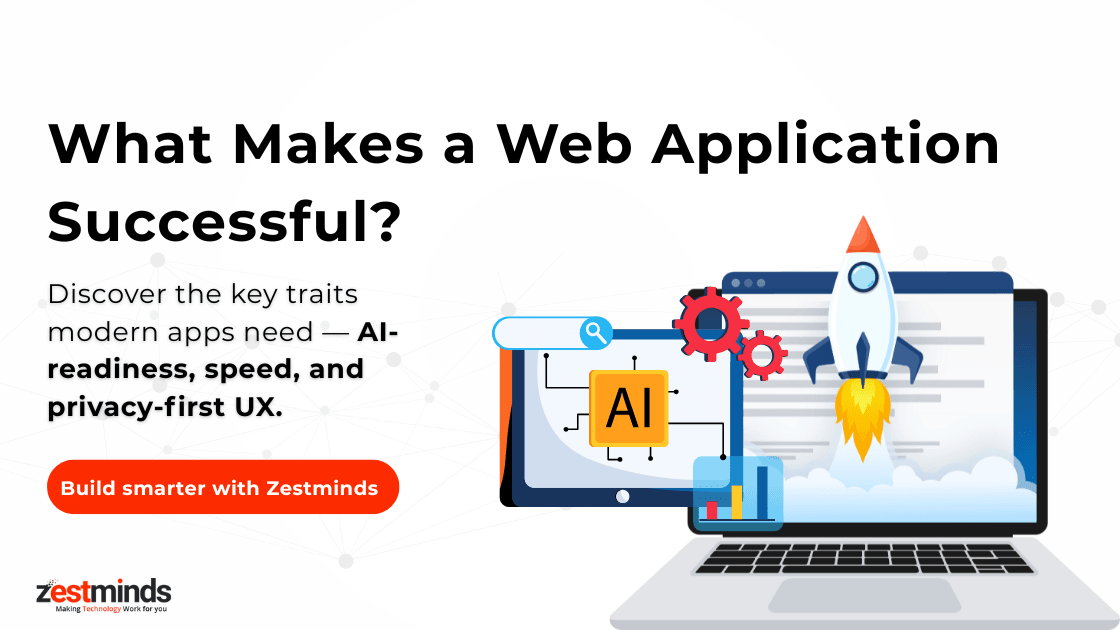Have you ever dreamt of turning your brilliant business idea into a thriving reality? The journey from concept to a successful product can be daunting. But there's a strategic approach called Minimum Viable Product (MVP) development that can significantly increase your chances of success.
This beginner's guide will equip you with all the essential knowledge about MVP development. We'll explore:
- What is an MVP and why is it important?
- Benefits of building an MVP for your startup.
- Key considerations for creating a successful MVP.
- Examples of MVP development across different industries (E-commerce, Marketplace, Fintech, CRM, LMS).
- The process of building an MVP (concept, features, development, testing).
- Tips for a smooth MVP development journey.
Understanding the MVP: Your Launchpad to Success
An MVP, or Minimum Viable Product, is a functional version of your product with just enough features to gather valuable user feedback and validate your business idea. It's not about building a complete product with all the bells and whistles; it's about testing the core concept and iterating based on user needs.
Why Choose the MVP Approach?
Building an MVP offers numerous advantages for startups and established businesses alike:
- Reduced Risk: MVPs allow you to test your concept with a real user base at a minimal investment, minimizing the risk of failure for a fully-fledged product.
- Faster Validation: Get user feedback quickly to see if your idea resonates with your target audience.
- Cost-Effectiveness: Focus resources on essential features, saving money on the development of functionalities users might not find valuable.
- Improved Product Development: User feedback helps refine your product and ensure you build something people truly want and need.
- Increased Agility: The iterative nature of MVP development allows you to adapt to changing market demands and user feedback.
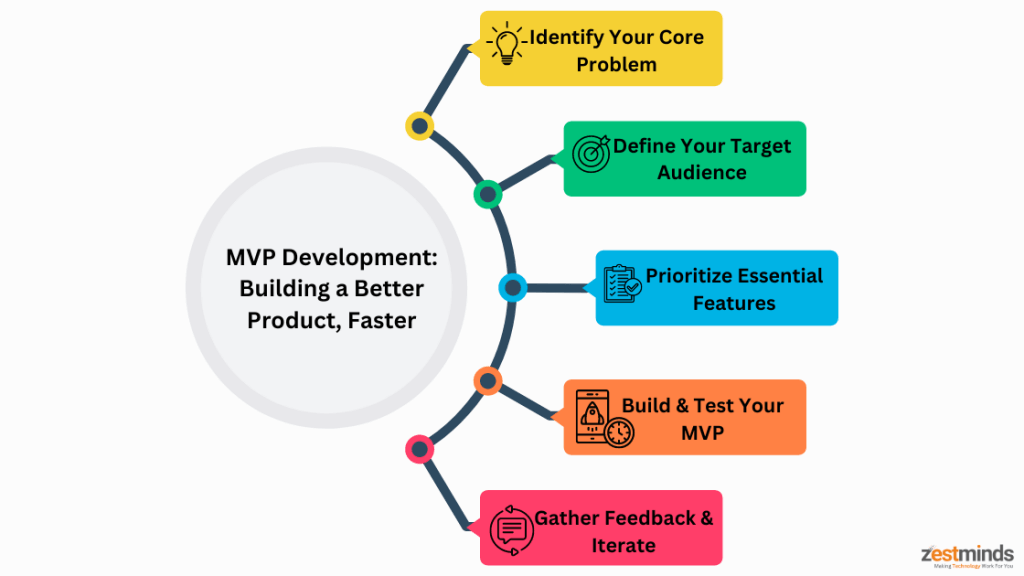
Taking Your Business Idea to the Next Level
Now that you understand the core concept, let's delve into some key considerations for building a successful MVP:
- Identify your target audience: Who is your ideal customer? Understanding their needs and pain points is crucial for building an MVP that resonates.
- Define the core problem you solve: What specific issue does your product address? Focus on delivering a solution in your MVP.
- Prioritize essential features: Start with the absolutely necessary functionalities to validate your core concept.
- Design a user-friendly experience: Your MVP should be easy to use and navigate for even first-time users.
- Establish clear success metrics: How will you measure the success of your MVP? Define key metrics like user engagement, conversion rates, and retention.
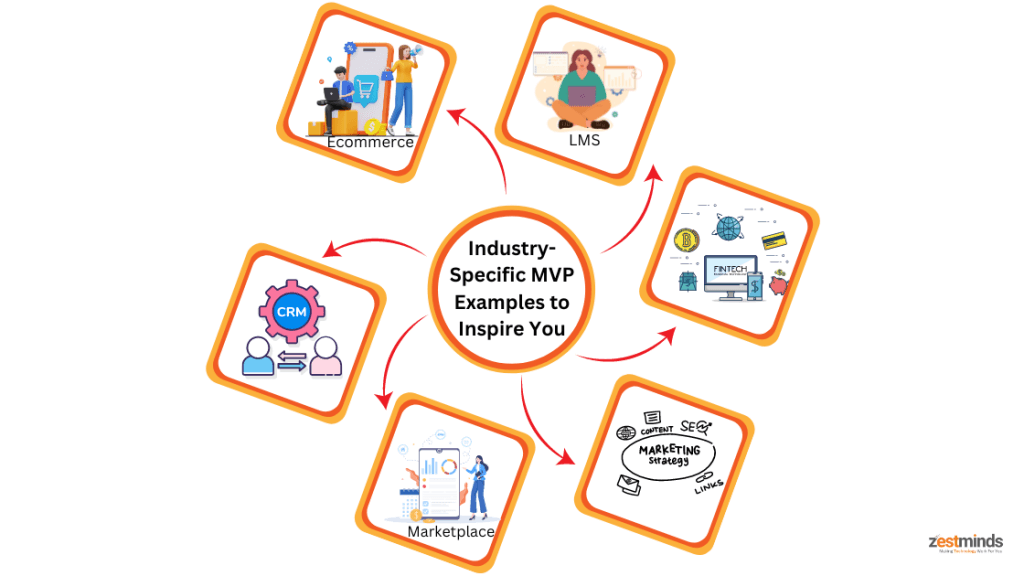
Industry-Specific MVP Examples to Inspire You
Let's explore how MVP development can be applied to different business verticals:
- E-commerce: Imagine an MVP focusing on a simplified product listing and checkout process, allowing you to test user interest before investing in a full-fledged online store.
- Marketplace: An MVP could connect a limited number of buyers and sellers to test the feasibility of your marketplace concept.
- Fintech: An MVP could start with a basic money transfer feature, ensuring user demand before developing more complex financial services.
- CRM (Customer Relationship Management): An MVP could focus on contact management and lead generation features to validate the need for a full-fledged CRM system.
- LMS (Learning Management System): An LMS MVP could offer a limited number of courses and assess user engagement before building a comprehensive learning platform.
Building Your MVP: From Concept to Reality
Now, let's take a step-by-step look at the MVP development process:
- Concept & Planning: Clearly define your value proposition and outline the core features for your MVP.
- Prioritization & Design: Prioritize the essential features and design a user-friendly interface for your MVP.
- Development: Choose a development approach based on your technical expertise and project needs.
- Testing & Feedback: Gather user feedback through various testing methods (user interviews, surveys, beta testing) to identify areas for improvement.
- Iteration & Improvement: Based on user feedback, iterate and improve on your MVP, adding new features and functionalities.
Tips for a Smooth MVP Development Journey
- Set realistic expectations: Remember, an MVP is a starting point, not a finished product.
- Focus on user value: Continuously prioritize features that deliver value to your target audience.
- Embrace agility: Be prepared to adapt your MVP based on user feedback and market trends.
- Build a strong development team: Partner with a team that understands MVP development and your specific industry needs.
By following these steps and keeping the valuable tips in mind, you can navigate the MVP development journey with confidence. Here at Zestminds, we are a team of experienced developers passionate about helping startups turn their ideas into successful products. We specialize in building MVPs across various industries, leveraging cutting-edge technologies like Python, PHP, Ruby on Rails, MERN/MEAN Stack, Flutter, Kotlin, React Native, Bubble.io, Webflow, and Magento.
Ready to take the first step towards realizing your business dream?
Contact us today for a free consultation to discuss your MVP development needs. We'll guide you through the process and help you build a product that truly resonates with your target audience.

Shivam Sharma
About the Author
With over 13 years of experience in software development, I am the Founder, Director, and CTO of Zestminds, an IT agency specializing in custom software solutions, AI innovation, and digital transformation. I lead a team of skilled engineers, helping businesses streamline processes, optimize performance, and achieve growth through scalable web and mobile applications, AI integration, and automation.
Stay Ahead with Expert Insights & Trends
Explore industry trends, expert analysis, and actionable strategies to drive success in AI, software development, and digital transformation.
